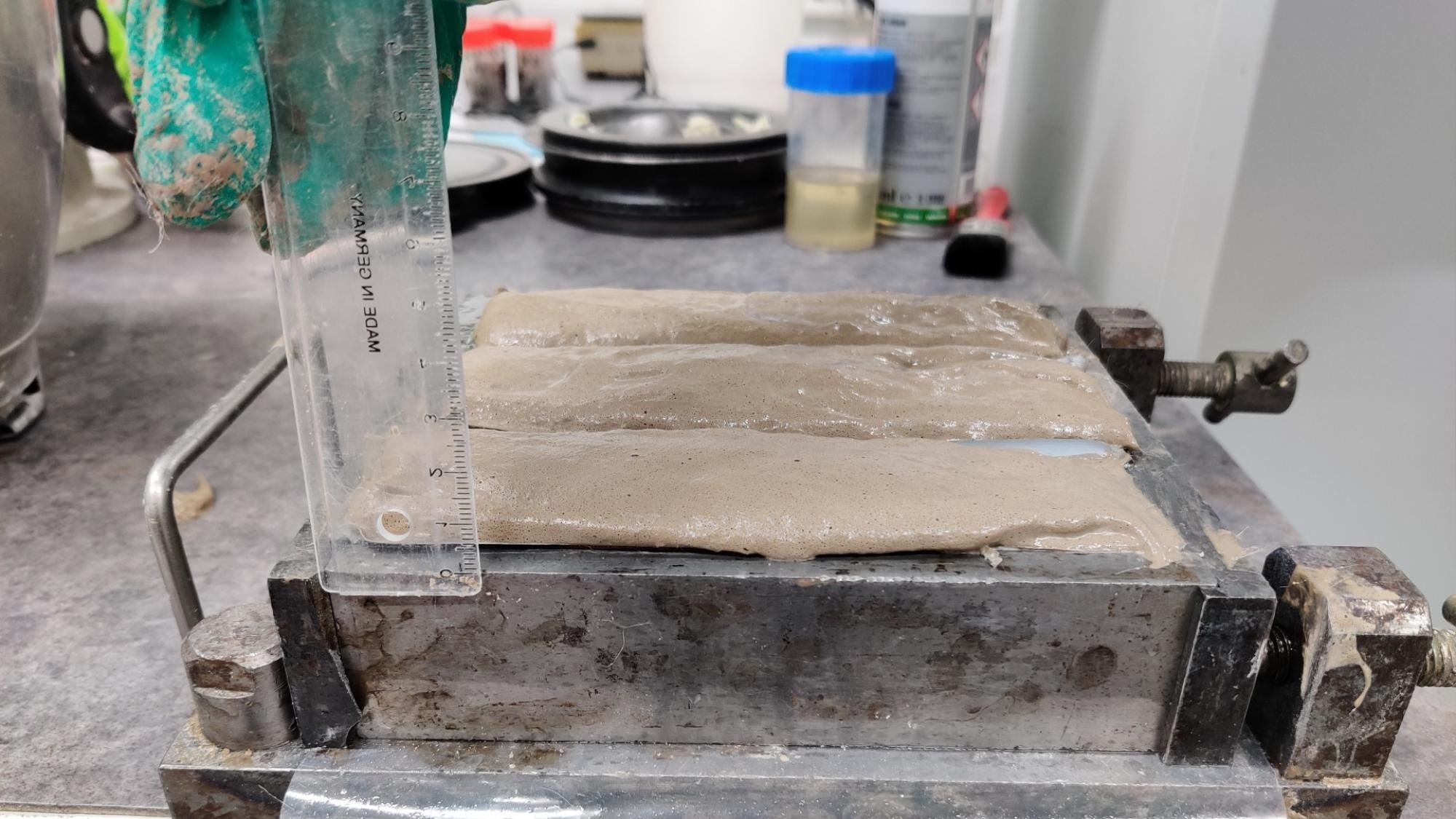Reviewed by Danielle Ellis, B.Sc.Oct 9 2024
Researchers from the University of Oulu developed a novel treatment technique that stabilizes concentrated brines by alkali activation. This technique incorporates brines into a cementitious binder. This study was published in the journal Desalination.
 A new method could combine two challenging waste streams: mine brines and tailings to produce new concrete binder. New materials for construction and environmental engineering are being developed in the laboratories of the University of Oulu. Image Credit: University of Oulu
A new method could combine two challenging waste streams: mine brines and tailings to produce new concrete binder. New materials for construction and environmental engineering are being developed in the laboratories of the University of Oulu. Image Credit: University of Oulu
Brine wastewater from mining and industry might be combined to create a different type of cementitious binder that is strong enough for a range of uses, such as mine backfilling. This would save money and the environment by enabling the safe binding of extremely concentrated salt solutions into solid form.
Several industrial sectors, such as mining, ash processing, and battery production, produce high quantities of saline wastewater, which typically contains three key constituents: sodium, sulfate, and chloride. These sectors are necessary for green and digital transformation.
Such salts are not hazardous or damaging to the environment—the same salts are prevalent in saltwater. However, they may be detrimental to the biota in the Baltic Sea's low salinity, particularly in inland freshwaters.
For instance, salt-contaminated lakes were discovered to be permanently stratified following the Talvivaara mining accident in Finland (2012), which can result in oxygen deficiency in the lake bottom.
The method, created by researcher Sima Kamali in her doctoral thesis, combines a raw material rich in calcium, silicon, and aluminum with brine and a small quantity of sodium hydroxide. As a result, a paste with enough strength for a range of uses is produced that can be utilized as a concrete binder.
A recent study that used metal industry slag as a raw material looked at this technique. The primary constituents of concentrated brine, sodium, sulfate, and chloride were found to be exceptionally well-stabilized in the solid structure and to have lost their water solubility.
The study also unexpectedly found that the alkali-activated paste's strength increased with a high salt component. The drawback is that because salt can cause corrosion, standard steel reinforcing cannot be utilized in this kind of concrete.
The developed method could be of particular interest in mining environments, where the raw material for the stabilization could be mine tailings.
Tero Luukkonen, Associate Professor, University of Oulu
The waste material that remains in a mine after precious ores have been removed is called mine tailings. Tailings ponds store the tailings.
“Often, tailings contain large amounts of calcium, silicon, and aluminum, which are precisely the elements needed for alkali activation,” said Luukkonen.
The new method could therefore combine two challenging waste streams: mine brines and tailings, to produce a useful material for applications such as mine filling. At present, ordinary Portland cement is often used in mine fillings, which could be replaced by an alkali-activated material.
Sima Kamali, Fiber and Particle Engineering Research, University of Oulu
The utilization of tailings in the concrete and construction sectors is gaining popularity, and the University of Oulu is conducting extensive research on novel materials and mine water purification. On the other hand, using mine effluent as a raw material is a new strategy.
The new research findings are part of a larger research effort co-funded by the European Union (under the NextGeneration EU program), called KaiPa.
Journal Reference:
Kamali, S., et al. (2024) Reverse osmosis reject water management by immobilization into alkali-activated materials. Desalination. doi.org/10.1016/j.desal.2024.117859.